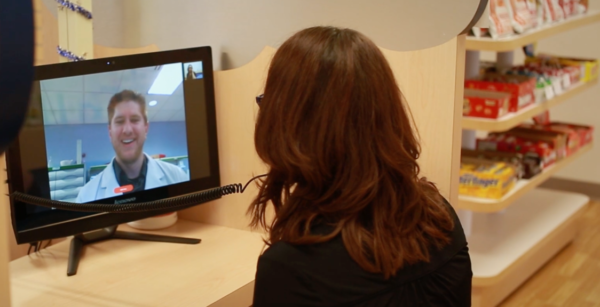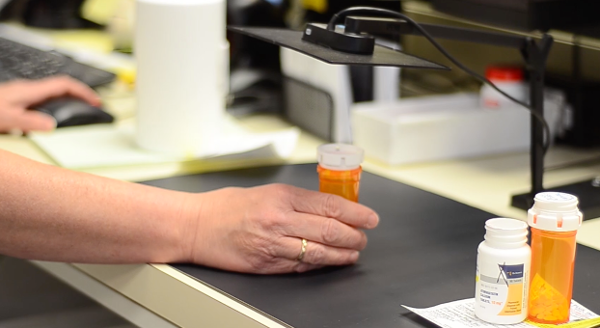You may know about the operational cost savings associated with telepharmacy, but what about the real return on investment (ROI)?
Depending on how you break it down, yes, there is typically cost savings associated with operating a telepharmacy when compared to a traditional retail pharmacy. You would have a hard time finding a customer of ours — whether a community pharmacy owner or an outpatient pharmacy director — that would deny that. But we’re not here to talk about financials.
There are many benefits to telepharmacy, but today we’re talking about the best return of all: better health outcomes.

Increasing pharmacy access
In pharmacy, convenience is king. With telepharmacy, convenience is benefit number one. Remote dispensing allows pharmacy owners and healthcare organizations to open brick-and-mortar telepharmacy sites and provide expert pharmaceutical care to patients in a location that’s convenient for them — even in pharmacy deserts. Whether the remote site is on main street in a rural community, inside of a medical clinic or in an underserved urban area, improved pharmacy access leads to better health outcomes more often. In fact, lack of pharmacy access has been linked to more hospital readmissions.
Using telepharmacy as a means to increase pharmacy access gives patients a convenient option to pick up over-the-counter (OTC) medication and easily access the pharmacist, which leads us to our next point.
Expanding the reach of pharmacists
Telepharmacy isn’t just another practice of pharmacy; telepharmacy acts as a vehicle to help pharmacists deliver expert care to more patients. Most all patients living in rural and underserved areas across the country cannot take advantage of the easy, down-the-street pharmacy access the rest of us take for granted every day. They can’t discuss their medication with a pharmacist or ask which OTC they should take for flu-like symptoms.
But, through telepharmacy technology, pharmacists can virtually put themselves in a corner drug store, or remote-dispensing site, in a community of 1,000 people who haven’t had a pharmacy in town for over 20 years. They can expand their reach to help an underserved urban area by offering dispensing at a clinic with a lot of foot traffic. These initiatives involve a pharmacist using remote-dispensing software as a tool to help patients fill their prescriptions and gain local access to the clinical expertise of a healthcare expert. They can also provide convenient dispensing at the point of care to help improve the chances that a patient will fill their prescription. Telepharmacy technology empowers pharmacists to create, foster and strengthen new relationships one patient at a time.
Also, healthcare organizations can connect any pharmacy specialist in their network to any pharmacy, clinic or hospital by way of remote-video counseling. A diabetes pharmacist, for example, can talk with a patient located hundreds of miles away through secure, live-and-interactive video counseling. This yields a better, more complete healthcare experience, matching patients with the experts they need no matter geographic location. Plus organizations can maximize resources across the enterprise while serving more patients; it’s a win-win.
Improving medication adherence
Roughly 34% of prescriptions are never filled, according to a study performed by IMS Health (Source: IMS Health Data, March 2011). Currently, a majority of healthcare organizations are betting on patients to fill their prescriptions after they walk out the door. There are too many variables, which can deter a patient from filling a prescription. That’s where remote dispensing comes into play.
Telepharmacy can help drive medication adherence rates up, as it is a safe, secure and cost-effective way to provide dispensing at the point of care or in small, underserved communities. Imagine — as a patient — having convenient access to a prescriber, yet no local access to a pharmacy; that’s the opposite of an ideal healthcare experience, the effects of which can show through in patient compliance. In fact, an integrated-care model that features on-site pharmacies produces higher medication adherence rates than community pharmacies, according to a study published in 2016.

Better health outcomes
Increased access to a pharmacist and a pharmacy lead to better health outcomes. No more skipping medication for a few days because it’s too far to drive. No more not filling a prescription because it’s too inconvenient. No more compliance issues because the pharmacist looked too busy to counsel on medication. Pharmacists play a critical role in improving patient health, and with the power of telepharmacy at their disposal, they can have an even bigger impact on patient health.
As you can see, the real ROI of telepharmacy extends much further beyond cost savings. In your mind, what is the best benefit of telepharmacy? Leave your comment below!


